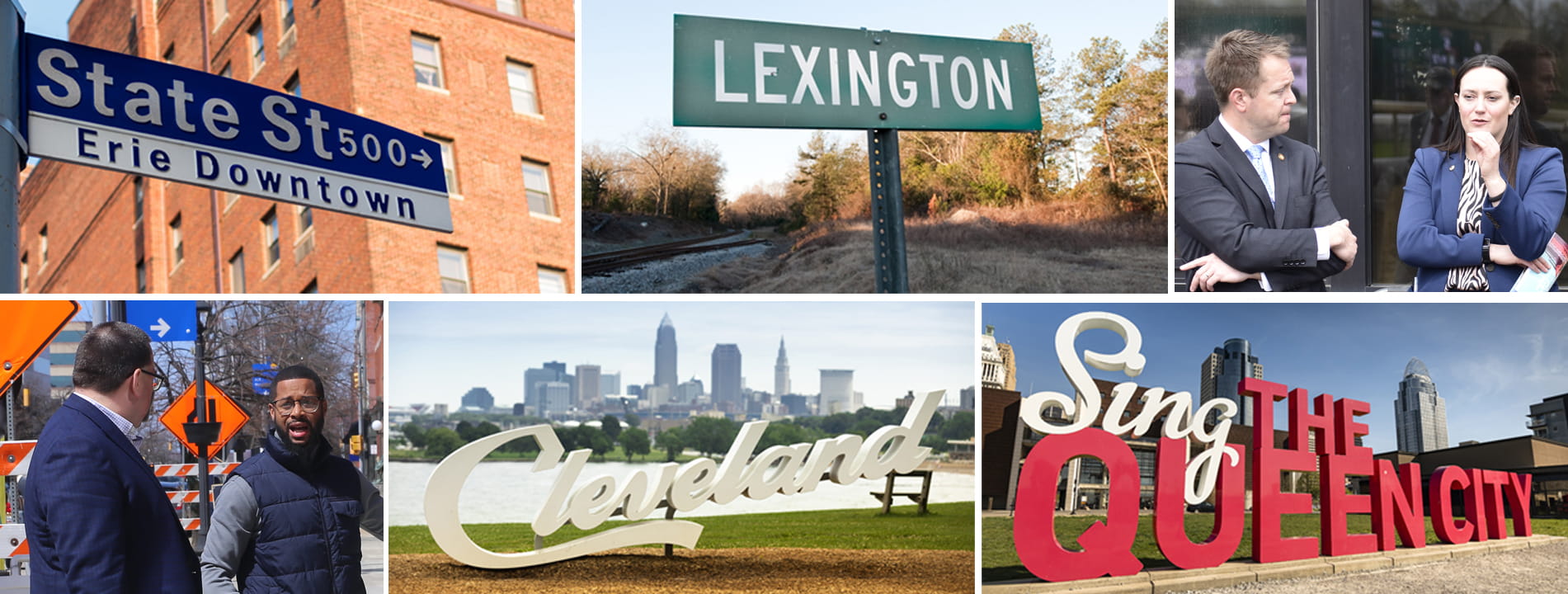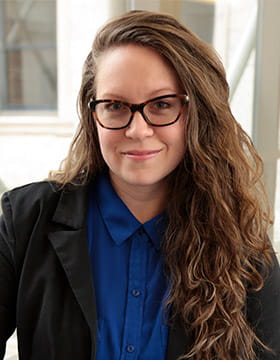- Share

The Human Factor: Why the Fed’s Work Isn’t All Numbers and Data
Whoever you are, the economy is affecting you and influencing your decisions, and your decisions in turn affect the economy. When central bank staff learn more about what’s happening in real time in local economies, they can (and do) share these experiences with those setting monetary policy for the country.
Key takeaways
- Get an inside look at how and why Cleveland Fed staff travel across the wide region we serve, meet with advisory councils and boards, and administer surveys to glean information about economic conditions
- Take a bird’s-eye view of our staff's visits across the region
- Engage with your central bank: Suggest a visit, recommend a council or board candidate, ask to receive our survey, or request a speaker
Summary
Federal Reserve Bank of Cleveland staff convene meetings every month with boards and councils composed entirely of non-Fed folks. They do this to hear how businesses and communities are faring—and what people are and are not doing.
Nearly every week of every year, Cleveland Fed staff travel the slice of the country the Bank serves. They tour businesses, communities, and economic development projects and meet with businesspeople and community members to learn about the economy people are experiencing.
It’s not uncommon for people engaging with the Fed during these visits to say, I have no idea why the Fed’s coming to talk to me.
The reason the Fed makes these visits is rooted in the intentionally decentralized structure of the Federal Reserve System. The Fed includes 12 regional Reserve Banks, including one in Cleveland, and 24 Branches, including the Cleveland Fed’s Branches in Pittsburgh and Cincinnati. The System works this way so the decisions (and reserves) of the Fed are spread across the country and the conditions of communities from every part of the nation are considered when the Fed sets monetary policy.1
Monetary policy
Monetary policy refers to the actions of central banks—institutions working for one country or monetary union—to achieve macroeconomic policy objectives such as price stability and full employment. By contrast, fiscal policy refers to the tax and spending policies of a national government. In the United States, fiscal policy decisions are determined by Congress and the Administration; the Fed plays no role in determining fiscal policy. But monetary policy is one of the Fed’s five functions.
Before Cleveland Fed president Beth M. Hammack attends meetings of the 19-member committee that sets monetary policy, the regional team briefs her on current regional economic conditions. Hammack is a member of this committee, called the Federal Open Market Committee (or FOMC), that sets the target for the federal funds rate, which influences whether other interest rates—the ones we pay on loans and earn on savings—rise or fall.
But before they brief President Hammack, the regional team has information to gather. New storytelling this month offers you a bird’s eye view of the visits they make and the meetings they convene to ensure the voices in Ohio and parts of Pennsylvania, West Virginia, and Kentucky are heard in Washington DC.
Included in this latest multimedia story by the Cleveland Fed are:
- The things said and seen by our regional team during visits to Pennsylvania and Kentucky in April 2025
- A peek inside a business advisory council meeting in Cincinnati and an interview revealing what a board director values about her service
- How our regional team uses the information gathered to brief our president and CEO
- Three questions the regional team answers
- A historical timeline of insights the Cleveland Fed has gathered dating back to 1919
- Ways members of the public (you!) are invited to engage with and inform the Federal Reserve
Featured in this story about the Cleveland Fed’s regional engagement are the voices of business and community leaders from the Fourth Federal Reserve District, the region the Bank serves, and members of the Bank’s regional team.
Read an excerpt from the story:
Conference Room 1 at Fralo Industries is typical, save for two things: There’s a Chow Chow with paws the size of small apples napping on the floor and a machine on the table that, when turned on, rapidly and loudly hisses. The dog doesn’t hiss, but she does bark when the doorbell rings. “She’s got to check everybody,” Frank Victor says.
Victor, cochair of Erie, Pennsylvania-based manufacturer Fralo and president of another manufacturer called Automated Industrial Systems, is meeting for the first time with Federal Reserve Bank of Cleveland staff today.
“Thank you for letting me crash your business,” begins Russell Mills, who spends multiple weeks a month and puts thousands of miles a year on his car engaging with regional stakeholders like Victor in the Fourth Federal Reserve District. Mills starts by clearing up a common misconception about the Fed. People often confuse the Fed with the entity that prints money, Mills explains. Instead, he says, the Fed keeps banks supplied with currency and coins, looks for counterfeit money, and shreds bills that are in poor condition.
“Where does that take place?” Victor asks. He finds it “fascinating” that the Fed is the bank for banks.
In the basement of the Cleveland Fed headquarters, Mills says, sharing the address, which is a few blocks south of the NFL football stadium.
“I know where that is,” Victor replies. “I’m a Cleveland Browns fan.”
“Oh, I’m sorry, Frank,” Mills quips back. (He would: Mills is regional executive of the Cleveland Fed’s branch in Pittsburgh, home to the Browns’ rival Steelers.) As regional executive, Mills monitors the region’s economic environment, and today’s meetings in Erie will help him do that.



